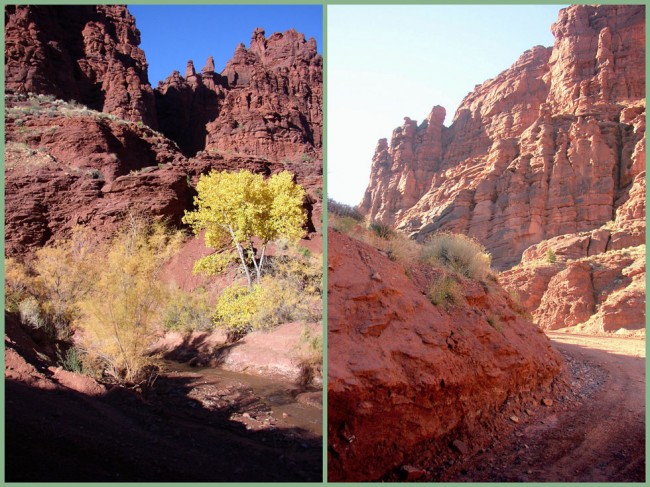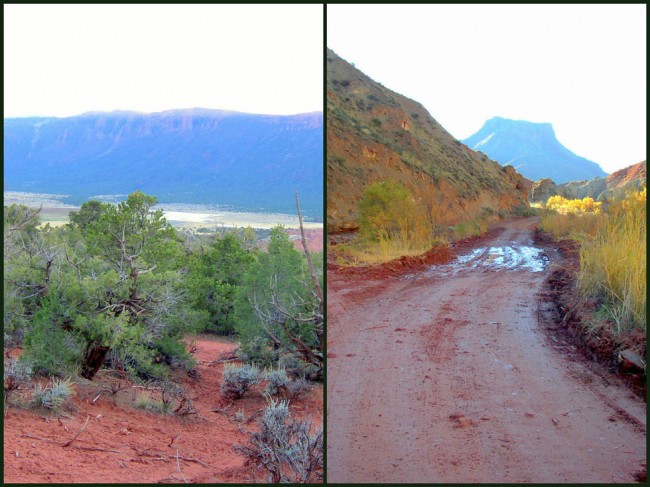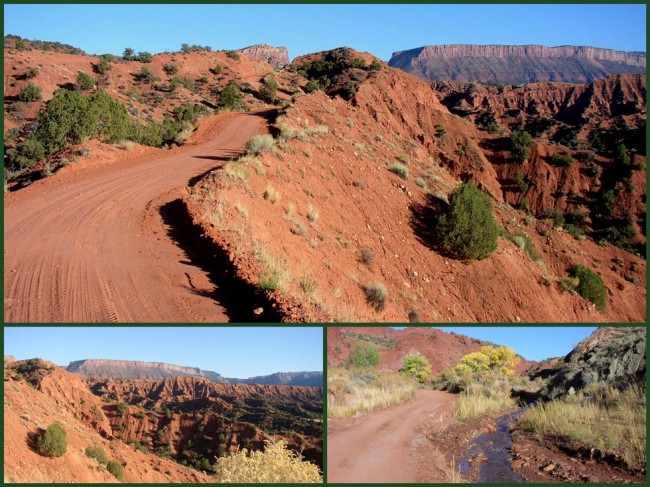Onion Creek, Utah
Traveling with my friend Jeff is always an adventure. One memorable event that comes to mind was our search for a campsite near Moab, Utah in a place called Onion Creek.
As it was late afternoon when we began looking, we realized that time was of the essence and that we needed to find a spot quickly. This turned out to be easier said than done. As soon as we entered the dirt road and started seeking out a nice spot, we soon realized that Onion Creek had been discovered by others in a big way, so big in fact that we couldn’t find anywhere suitable to camp.

Before all was said and done, we have traversed end to end and back out with no acceptable place to set up. Throughout our journey, we crossed the creek countless times, sometimes driving through very narrow areas with massive rock walls on both sides. One of the things that made this trek extra special was the amazing salt diaper formations we saw along the way.

This place is so unique and unusual I thought it appropriate to offer a detailed geologic description. After thinking again I realized I wasn’t the man for the job. So, here’s the story of Onion Creek as relayed by Jeff Campbell, formerly of the Utah Geological Survey.
Keeping it simple, during Pennsylvania times, northwest trending faults occurred in the southeast portion of Utah creating several basins. Examples of these are Spanish Valley (where Moab sits) and Castle Valley. These have salt under them that was deposited from the “arm of an ancient sea” that submerged the area and evaporated over a period of 10 million years. The end result is a salt layer that is up to 10,000 feet thick in some areas.
During a long period of “mellow” behavior in regards to faults (290-70 million years ago), younger sediments continued to cover the salt. Then, about 40-20 million years ago, renewed faulting begun uplifting the rock on the edges of the salt. Due to the salts “plastic” behavior it absorbed the movement as the parallel rocks thrust upward. The salt continued to collapse under the weight of the overlying rocks. So now you have a trough (or basin) that has high cliffs from faulting on both sides. The collapsed salt erodes over time when exposed to water and air leaving little physical trace of the salt itself.
What makes Onion Creek so unique is that the diaper is exposed, with the salt still visible. It is being squeezed upward by the sediments eroded from the adjacent cliffs. We are probably seeing a small amount compared to what has already eroded.
The smell at the diaper is from a spring appropriately named “Stinking Spring” due to a high Sulfur content. The diaper also contains large gypsum crystals. The strange colors in the diaper are from chemical reactions to the air, water and the minerals in the salt itself.

I think it’s pretty obvious why Jeff was the right person to write this part of the Travel Log. Though I do have some education and training in geology, I pass the baton of expertise to my good friend whose passion for this discipline makes him no less than amazing with his insight.
Last modified on: June 15th 2013.